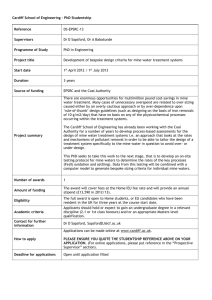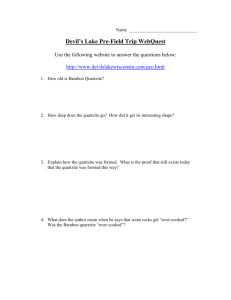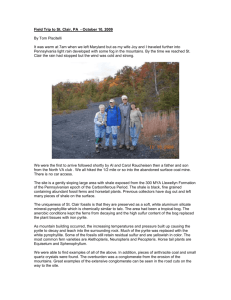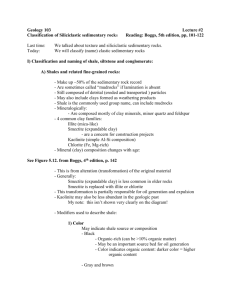THE EXTRACTION OF A GOLD BEARING REEF BELOW THE
advertisement
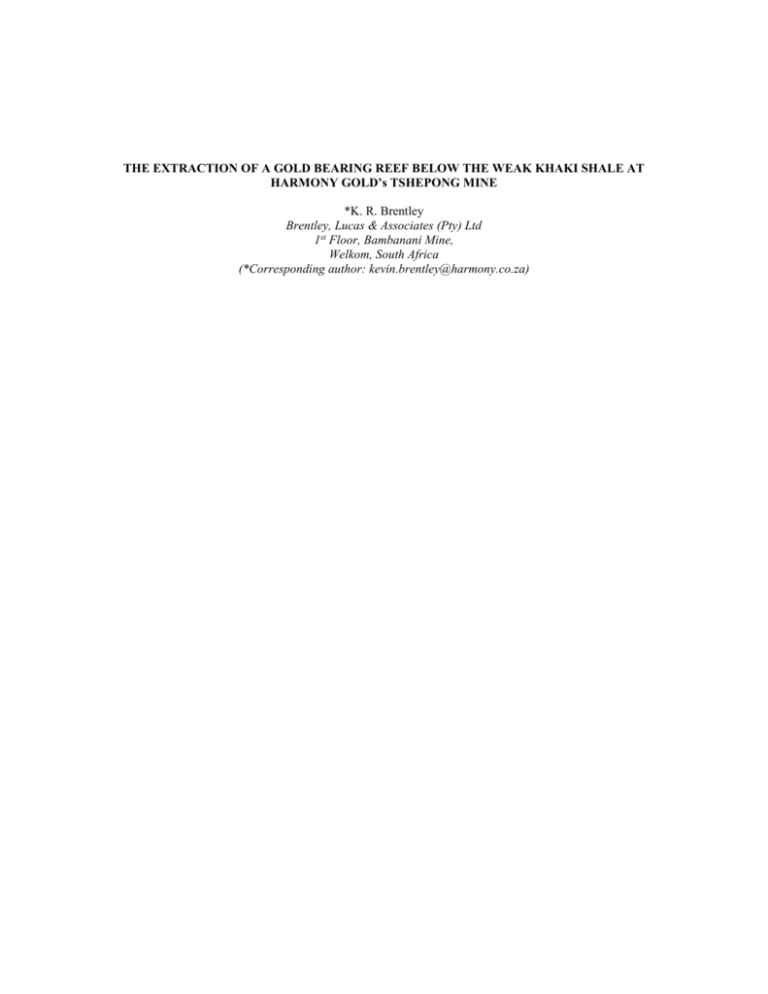
THE EXTRACTION OF A GOLD BEARING REEF BELOW THE WEAK KHAKI SHALE AT HARMONY GOLD’s TSHEPONG MINE *K. R. Brentley Brentley, Lucas & Associates (Pty) Ltd 1st Floor, Bambanani Mine, Welkom, South Africa (*Corresponding author: kevin.brentley@harmony.co.za) THE EXTRACTION OF A GOLD BEARING REEF BELOW THE WEAK KHAKI SHALE AT HARMONY GOLD’s TSHEPONG MINE ABSTRACT Tshepong Mine, Harmony’s largest gold producing mine, is situated in the Free State portion of the Witwatersrand Basin, east of Odendaalsrus and north of Welkom, South Africa. The Basal reef is a narrow tabular orebody and is the main gold bearing orebody at Tshepong mine. The strata strike mainly in a north-south direction and have an average dip of 22º. Currently mining takes place at depths of between 1690 and 2150m below surface. The Basal reef unit consists of a Basal conglomerate ranging between a few and 30cm in thickness. Some 80-90% of the gold is contained within the lower 15-20cm of the conglomerate. Directly above the conglomerate is the quartzite placer unit which is a clean hard and competent rock and has been known to vary between 50 and 200cm in thickness. The Basal unit is overlain by the thick Khaki-shale which can vary between 30 and 500cm and is fairly weak and incompetent khaki coloured chloritic shale. A method of stoping, termed “undercut” is practiced in order to remove the lower 15-20cm of the gold rich conglomerate. This method entails removing the portion of conglomerate along with some 70-80cm of footwall host rock which is a strong competent quartzite. The remaining hard competent quartzite placer is left in-situ and forms a competent hanging-wall which can stabilize and prevent exposure of the weak Khaki-shale. The method of extraction was developed through trial and error and has been used successfully since its inception in the early 1960’s where similar methods were developed to extract the Basal conglomerate at the Western Holdings Mines. Recently prospect drilling and a number of localised hanging-wall failures indicated that the residual quartzite beam could be less than 60cm and in some instances as thin as 30cm in certain areas of the mine. The result of this is a less stable hanging-wall which not only posed a safety risk to workers in these areas but also had the potential of locking up some 840 000 tons of gold bearing ore. At the present gold price this amounts to revenue of approximately ZAR1.5 billion (U.S. $143 million). This paper discusses the stoping method of “undercut” and existing practices in place at Tshepong Mine. It also explores new initiatives such as the use of a simple freely-supported elastic beam solution to perform back analysis, on-site data capturing of beam thickness and support geometries in order to develop empirical design charts and numerical modelling to assist in the verification of the empirical design method. KEYWORDS Harmony, Shale, Undercut, Quartzite, Extraction


